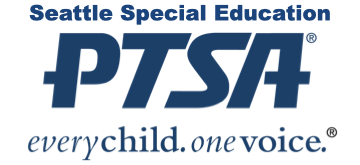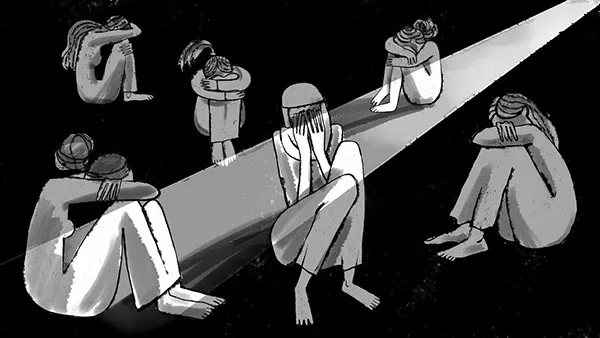Dear School Board Directors, Superintendent Jones and Senior Staff,
Thank you for this opportunity to provide comments from the Special Education PTSA about Policy 3246 and the accompanying Procedure, which will be introduced at the August 25 School Board meeting.
As some of you know, we have provided comments about the development of the policy previously and participated in the community forum last spring. The draft of the policy shown on the shared screen at that community forum was not shared publicly before or after the forum, despite our request. We asked School Board Directors on the Student Services, Curriculum & Instruction Committee to share the Board Action Report, the new draft of the policy (which changed a great deal from the draft shared at the spring forum) and the draft procedure so we could provide comments before the August committee meeting. We received those drafts (thank you, Directors!) on Monday, August 16 and sent our comment letter to Dr. Pedroza and the committee members on Wednesday, August 18 before the committee meeting. We are pleased to see that some of our suggestions have been incorporated in the documents being introduced on August 25.
We are concerned, however, as we have reflected and talked to others in the disability community that the policy and procedure lack a clear statement about how the District plans to prevent the student behaviors that lead adults to believe they have no choice but to restrain or isolate. We have previously urged the District to adopt an evidence-based behavioral framework for schools to use that has been shown to reduce restraint and isolation by preventing the student behaviors that lead to students being restrained and isolated. We have specifically suggested, for example, Dr. Ross Greene’s Collaborative and Proactive Solutions.
The training referred to in the draft policy and procedure appears to be focused on de-escalation after problematic behavior has started and how to restrain when necessary. While we recognize and support the need for such training, we fear that the District will not be successful in meeting its goal of eliminating isolation and drastically reducing restraint unless schools and teachers have the tools they need to prevent problem behaviors. This is especially important given that the District’s data show that overwhelmingly, disabled students with IEPs are the students who are being restrained and isolated, and restraint and isolation is used with many students in place of intervention strategies. To reduce those numbers will require training about the relationship between disability and behavior and what supports disabled students need to be successful.
BAR
Thank you for adding language to the BAR acknowledging the intersectionality of race and disability with respect to this issue. We believe there is a typo in the first paragraph under Para. 2 that refers to “anti-ablism.” We believe that should refer to ableism, not anti-ableism, given the context of the sentence.
We continue to be concerned about the use of the word, postvention, in all of the documents as we understand that postvention is an intervention following a suicide. We don’t believe it’s appropriate to use the word postvention in the context of this policy.
Policy 3246
We are proud to see Seattle Public Schools lead the way in Washington state by prohibiting isolation. We have concerns that it appears you plan to prohibit isolation before staff training is completed. We ask you to consider including a timeline, taking into account the need to have trained staff available to prevent behavioral issues, especially in those schools where it is known that isolation is used. We do not want to see an immediate prohibition of isolation which could result in an increase in restraints and calls to the police.
Although it is defined in the Procedure, the term “Other Uses of Physical Crisis Intervention” is vague and we are concerned that it could be susceptible to misuse. We recommend that it be deleted.
We are pleased to see the section about the debriefing process after a restraint incident, including consideration of supports and strategies to reduce the future use of restraint on that student. We think it would make sense to add a provision directing technical assistance for schools at which there are multiple incidents of restraint. As you are aware, OSPI has staff available to provide such technical assistance. We know from data, for example, that some elementary schools with Social Emotional Learning (SEL) special education programs have reported large numbers of restraints. Stating in policy that the District will take advantage of technical assistance from OSPI to address cultural issues that may exist at those schools resulting in large numbers of restraints will show a clear determination by the District to provide staff with more tools to avoid resorting to restraining students.
Procedure
The term “likelihood” is defined in Section B as “[t]he chance that an event of behavior may occur.” OSPI defines “likelihood” as “a substantial risk.” The proposed definition in the Procedure appears to be less protective of students than the OSPI definition and therefore is likely not enforceable. We recommend that it be changed to align with the OSPI definition.
Section B includes a definition for “Positive Behavior Support Plan.” We are not sure what a Positive Behavior Support Plan is since it is not a recognized term nor are we sure how it differs from a Behavior Intervention Plan. In addition, it is not clear how staff would become aware that a student had a Positive Behavior Support Plan if that student did not have an IEP. Clarification on these points would help.
In the definition of “Behavior Intervention Plan,” the following language appears: “The IEP team must also develop and implement a BIP if it determines that the student’s conduct is a manifestation of the student’s disability ….” This language does not make sense because “conduct” is a much broader term than problematic behaviors. Not every student with an IEP needs a behavior plan.
We have concerns about the Monitoring section, specifically the sentence requiring the staff member observing the restraint to stop the restraint “either verbally or physically,” if they observe “physical or psychological distress.” We believe that students experience psychological distress every time they are restrained. We are concerned about suggesting physical involvement in an already overly physical and heated space and we are not sure what it means to verbally stop a restraint. We understand the intention, but wonder if experts in the behavioral health field might be able to suggest language that is more clear.
The section on Staff Training Requirements is noteworthy for requiring training of all staff in trauma de-escalation and having a trained team in each building, which is a best practice. However, it does not require training about disability-based behaviors and appropriate responses when disability plays a role in challenging behaviors. This is critical given the data in SPS and we urge you to amend this section before the Procedure is adopted. We would also like to see annual training required.
The post-incident reporting requirements should include the training status of the staff involved in administering the restraint.
The section on Processing the Incident does not address who will process the incident if the person who administered the restraint was the building administrator. The person who processes the incident with the building administrator in these cases should be someone who is superior to the building administrator, who is also appropriately trained in the area of behavioral health and able to provide the necessary support to all staff involved.
We ask that the Annual Report to the School Board also include data regarding the number of staff who have completed training and the number of buildings with trained de-escalation teams.
Thank you for considering these comments and suggestions.
Respectfully,
Janis White, President
Seattle Special Education PTSA

